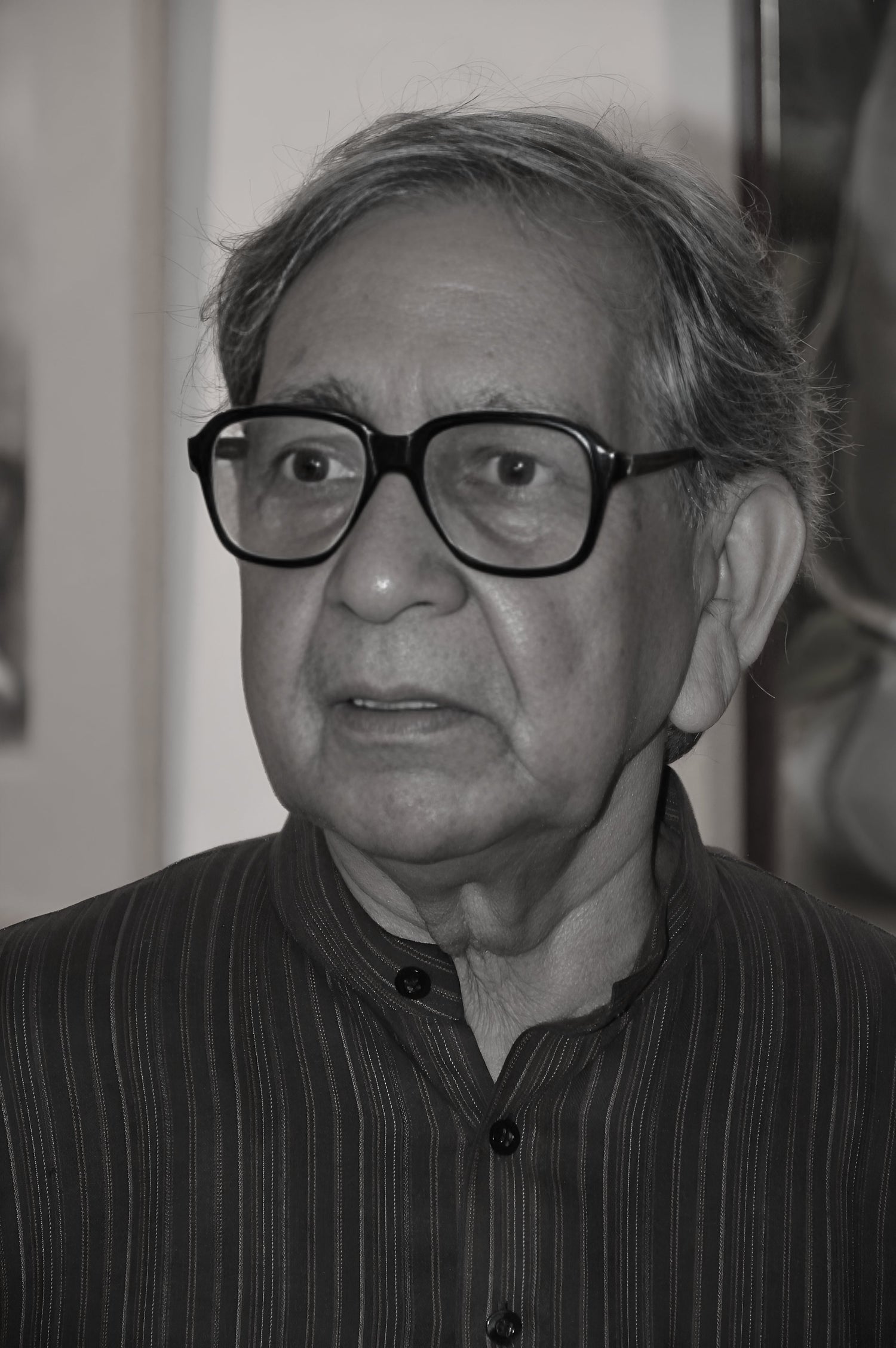
GANESH HALOI
Samindranath Haloi’s life and art carry the weight of displacement and memory, shaped profoundly by the upheaval of the Partition of India in 1950. Born in 1936 in Jamalpur, Mymensingh (now part of Bangladesh), the traumatic experience of forced migration left a lasting imprint on his creative outlook. This personal history infuses his work with a lyrical sensibility and a deep yearning for a lost homeland, exploring themes of loss and belonging with subtlety and emotional depth.
Graduating from the Government College of Art and Craft, Calcutta, in 1956, Haloi’s early professional years included a significant role with the Archaeological Survey of India, where he meticulously replicated the Ajanta cave murals. This intense engagement with ancient Indian art profoundly influenced his understanding of line, rhythm, and form, elements that would become central to his abstract vocabulary. After seven years with the ASI, he returned to his alma mater to teach, shaping younger generations of artists until his retirement. Since becoming a member of the Society of Contemporary Artists, Calcutta in 1971, Haloi’s work has been showcased extensively across India and on international platforms. His paintings have featured in prominent exhibitions such as Documenta 14 in Athens and Kassel, the Architecture of Life exhibition at Berkeley Art Museum, the 8th Berlin Biennale, and A Special Arrow Was Shot in the Neck at the David Roberts Art Foundation in London. These shows reflect the wide recognition of his meditative approach to abstraction and his nuanced exploration of memory and place.
Represented by many renowned galleries in Kolkata and New Delhi, Haloi’s solo exhibitions, including Re-citing Land in Mumbai, The Architectonics of Form in Kolkata and New Delhi, and Form & Play during Asia Week in New York, demonstrate his sustained engagement with themes of form, displacement, and the poetics of space. His paintings, often abstract and emotionally resonant, invite viewers into reflective spaces where history and personal experience intersect. Haloi’s work remains a compelling dialogue between the fragility of human memory and the enduring presence of place. His art quietly captures the tension between loss and continuity, making visible the invisible emotional landscapes shaped by history and migration. Through his refined visual language, Haloi continues to contribute meaningfully to contemporary Indian art, offering a profound meditation on identity, memory, and the complex textures of lived experience.

